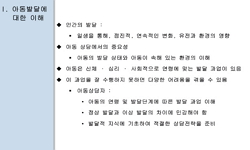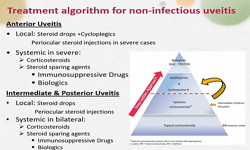Background and Purpose To determine the clinical phenotypes, relapse timing, treatment responses, and outcomes of children with relapsing myelin oligodendrocyte glycoprotein antibody-associated disease (MOGAD). Methods We collected the demographic, cl...
http://chineseinput.net/에서 pinyin(병음)방식으로 중국어를 변환할 수 있습니다.
변환된 중국어를 복사하여 사용하시면 됩니다.
- 中文 을 입력하시려면 zhongwen을 입력하시고 space를누르시면됩니다.
- 北京 을 입력하시려면 beijing을 입력하시고 space를 누르시면 됩니다.



Phenotype of Relapsing Myelin Oligodendrocyte Glycoprotein Antibody-Associated Disease in Children
한글로보기https://www.riss.kr/link?id=A109444700
-
저자
Ji Yeon Han (-) ; Soo Yeon Kim (-) ; Woojoong Kim (-) ; Hunmin Kim (-) ; Anna Cho (-) ; Jieun Choi (-) ; Jong-Hee Chae (-) ; Ki Joong Kim (-) ; Young Se Kwon (-) ; Il Han Yoo (-) ; Byung Chan Lim (-)
- 발행기관
- 학술지명
- 권호사항
-
발행연도
2025
-
작성언어
English
- 주제어
-
등재정보
KCI등재,SCIE,SCOPUS
-
자료형태
학술저널
-
수록면
65-73(9쪽)
- 제공처
-
0
상세조회 -
0
다운로드
부가정보
다국어 초록 (Multilingual Abstract)
Methods We collected the demographic, clinical, laboratory, and radiological data of patients aged <18 years who had been diagnosed with MOGAD at Seoul National University Children’s Hospital between January 2010 and January 2022; 100 were identified as positive for MOG antibodies, 43 of whom experienced relapse.
Results The median age at onset was 7 years (range 2–16 years). The median number of relapses was 2 (range 1–8), and patients were followed up for a median of 65 months (range 5–214 months). The first relapse was experienced before 3 months from onset by 15 patients (34.9%). The most-common initial phenotypes were acute disseminated encephalomyelitis (n=17, 39.5%) and optic neuritis (ON; n=11, 25.6%). The most-common relapse phenotypes were neuromyelitis optica spectrum disorder (n=9, 20.9%), relapsing ON (n=6, 14.0%), and multiphasic disseminated encephalomyelitis (n=6, 14.0%). Many of the patients (n=18, 41.9%) were not specifically categorized. A high proportion of these patients had non-acute disseminated encephalomyelitis encephalitis. Atypical phenotypes such as prolonged fever or hemiplegic migraine-like episodes were also noted. Mycophenolate mofetil and cyclic immunoglobulin treatment significantly reduced the annual relapse rates.
Conclusions Our 43 pediatric patients with relapsing MOGAD showed a tendency toward early relapse and various relapse phenotypes. The overall prognoses of these patients were good regardless of phenotype or response to second-line immunosuppressant treatment.
Background and Purpose To determine the clinical phenotypes, relapse timing, treatment responses, and outcomes of children with relapsing myelin oligodendrocyte glycoprotein antibody-associated disease (MOGAD).
Methods We collected the demographic, clinical, laboratory, and radiological data of patients aged <18 years who had been diagnosed with MOGAD at Seoul National University Children’s Hospital between January 2010 and January 2022; 100 were identified as positive for MOG antibodies, 43 of whom experienced relapse.
Results The median age at onset was 7 years (range 2–16 years). The median number of relapses was 2 (range 1–8), and patients were followed up for a median of 65 months (range 5–214 months). The first relapse was experienced before 3 months from onset by 15 patients (34.9%). The most-common initial phenotypes were acute disseminated encephalomyelitis (n=17, 39.5%) and optic neuritis (ON; n=11, 25.6%). The most-common relapse phenotypes were neuromyelitis optica spectrum disorder (n=9, 20.9%), relapsing ON (n=6, 14.0%), and multiphasic disseminated encephalomyelitis (n=6, 14.0%). Many of the patients (n=18, 41.9%) were not specifically categorized. A high proportion of these patients had non-acute disseminated encephalomyelitis encephalitis. Atypical phenotypes such as prolonged fever or hemiplegic migraine-like episodes were also noted. Mycophenolate mofetil and cyclic immunoglobulin treatment significantly reduced the annual relapse rates.
Conclusions Our 43 pediatric patients with relapsing MOGAD showed a tendency toward early relapse and various relapse phenotypes. The overall prognoses of these patients were good regardless of phenotype or response to second-line immunosuppressant treatment.
동일학술지(권/호) 다른 논문
-
- 대한신경과학회
- Soo-Hyun Kim
- 2025
- KCI등재,SCIE,SCOPUS
-
“Ear of the Lynx” Sign in Hereditary Spastic Paraplegia 76
- 대한신경과학회
- Myung Jun Lee
- 2025
- KCI등재,SCIE,SCOPUS
-
Creutzfeldt-Jakob Disease With Double Mutations at Codon 180 and Codon 232 of PRNP
- 대한신경과학회
- Sumin Kim
- 2025
- KCI등재,SCIE,SCOPUS
-
- 대한신경과학회
- Yuri Je
- 2025
- KCI등재,SCIE,SCOPUS




 KCI
KCI






